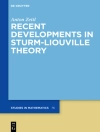This book brings together ideas from experts in cognitive science, mathematics, and mathematics education to discuss these issues and to present research on how mathematics and its learning and teaching are evolving in the Information Age. Given the ever-broadening trends in Artificial Intelligence and the processing of information generally, the aim is to assess their implications for how math is evolving and how math should now be taught to a generation that has been reared in the Information Age. It will also look at the ever-spreading assumption that human intelligence may not be unique—an idea that dovetails with current philosophies of mind such as posthumanism and transhumanism. The role of technology in human evolution has become critical in the contemporary world. Therefore, a subgoal of this book is to illuminate how humans now use their sophisticated technologies to chart cognitive and social progress.
Given the interdisciplinary nature of the chapters, this will be of interest to all kinds of readers, from mathematicians themselves working increasingly with computer scientists, to cognitive scientists who carry out research on mathematics cognition and teachers of mathematics in a classroom.
Cuprins
1. The Information Age, Mathematics, and Mathematics Education (S. Costa, M. Danesi, D. Martinovic).- 2. An Unsupervised Approach to User Characterization in Online Learning and Social Platforms (D. Vilenchik).- 3. Argumentation is Elementary: The Case for Teaching Argumentation in Elementary Mathematics Classrooms (K. Marks Krpan, G. Shambu).- 4. Subverting Stereotypes: Visual Rhetoric in the #She Can STEM Campaign (D. Danuser).- 5, Graphical Literacy, Graphicacy, and STEM Subjects (S. Costa).- 6. Mathematics, Statistics, and Sports (F. Nuessel).- 7. Travels with Epsilon in Sign and Space (L.H. Kauffman).- 8. Experimental Mathematics: Overview and Pedagogical Implications (M. Danesi).- 9. Why the Basics Still Matter: The Cost of Using a Machine to Do Mathematics (S. Gollish).- 10. Syntonic Appropriation for Growth in Mathematical Understanding: An Argument for Curated Robotics Experiences (K. Francis, S. Khan).- 11. Why Do Mathematicians Need Diagrams? Peirce’s Existential Graphs and the Idea of Immanent Visuality (V. Kiryushenko).- 12. Procedural Steps, Conceptual Steps, and Critical Discernments: A Necessary Evolution of School Mathematics in the Information Age (M. Metz, B. Davis).- 13. If One Can Read and Write Then One Can Also Do Mathematics (R.K. Logan).












